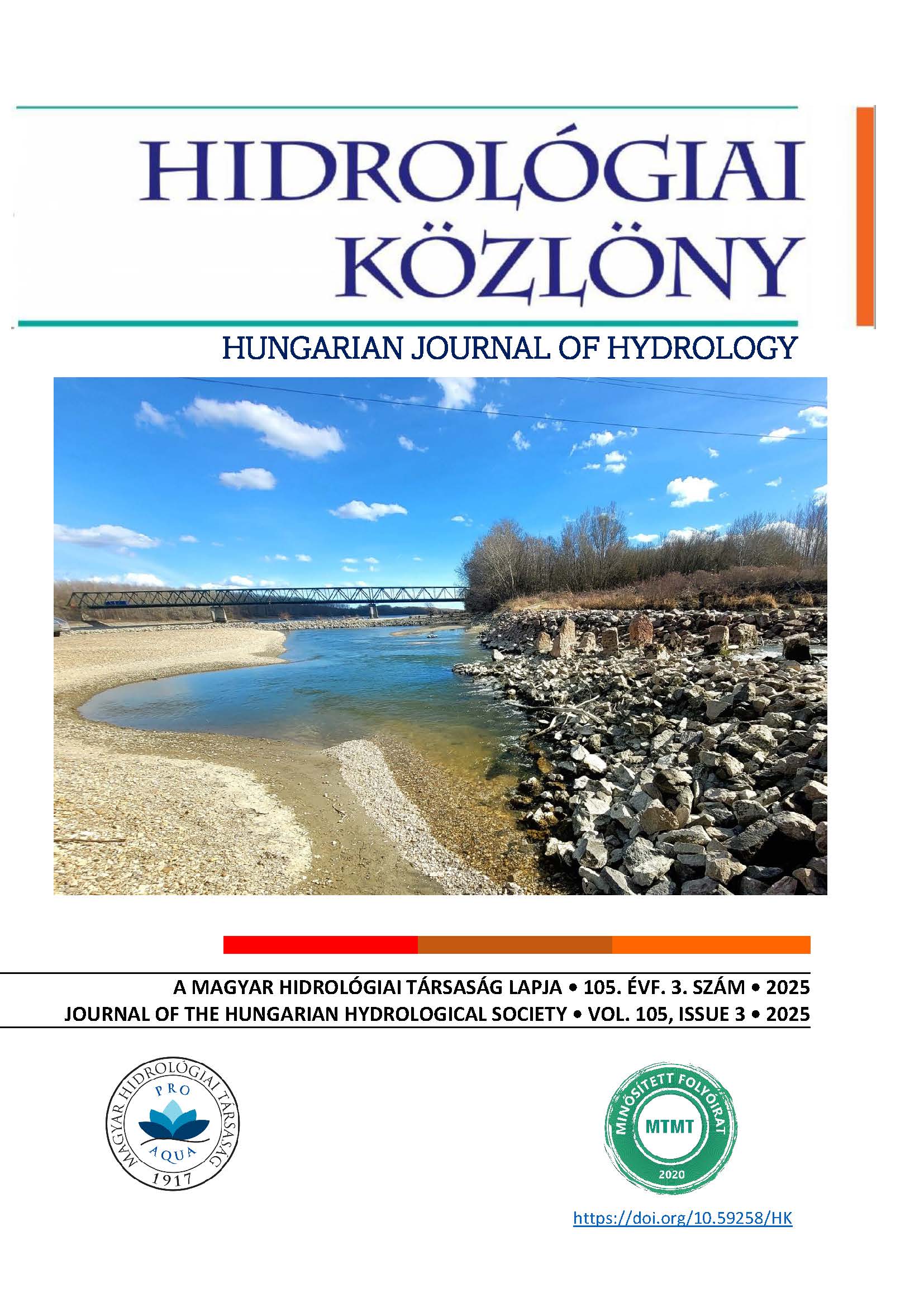The importance of microscopic biological analysis in the control of drinking water quality – the presentation of the laboratory aspects of the water pollution in a Hungarian settlement
Abstract
The application of indicator organisms is crucial in the monitoring of drinking water quality. According to national regulations, the monitoring protocol also includes the microscopic biological examination of water samples, which focuses on the detection of the living organisms. Most of the organisms found in the distribution systems are non-pathogenic and do not pose a risk to human health; however, they can play a role in the transmission of pathogens and contribute to protection against disinfectants and also cause taste and smell changes at the consumer endpoints. Their examination is also important because they can indicate the changes within the water system: they may signal raw water contamination, post-contamination growth within the system, stagnation, biofilm formation, and, not least, technological issues.
One of the main advantages of microscopic biological examinations is that they are not time-consuming, which is particularly crucial in cases of severe contamination, as it allows the testing laboratory to provide results as soon as possible after the sampling. During our work, we participated in the laboratory analysis of a Hungarian settlement’s water contamination event: we performed microscopic biological examinations on 35 samples from various sampling points. Protozoa (Protozoa sp.), nematodes (Nematoda sp.), rotifers (Rotatoria sp.), and arthropod mosquito larvae (Chironomidae sp.) were identified from the samples. However, the occurrence of these organisms was stochastic throughout the examined period. Microscopic organisms were mainly detected at the consumer endpoints of the drinking water system; they only appeared once in the reservoir pools and were not present in the water going directly into the system. This suggests that the problem was not related to the technology of the water production wells but rather to changes within the distribution system itself (e.g., household water purifiers, stagnation, biofilm formation). The arthropods, however, may have entered the system due to damage to the reservoir pools, which is supported by their appearance not only at consumer endpoints of the drinking water system but also in the pools themselves. Thanks to the appropriate water treatment processes, the number of microscopic organisms decreased, and, by the end of the examined period, they were no longer detectable in the samples. Following the emergency period, sampling continued monthly in accordance with the self-monitoring plan, and the water samples have had appropriate drinking water quality.
References
/2023 I.12. Kormányrendelet (2023). 5/2023. (I. 12.) Korm. rendelet az ivóvíz minőségi követelményeiről és az ellenőrzés rendjéről.
Bichai, F., Payment, P., Barbeau, B., (2008). Protection of waterborne pathogens by higher organisms in drinking water: a review. Can J. Microbiol. 54, pp. 509-524. https://doi.org/10.1139/W08-039
Bichai, F., Barbeau, B., Payment, P. (2009). Protection against UV disinfection of E. coli bacteria and B. subtilis spores ingested by C. elegans nematodes. Water Res. 43, pp. 3397-3406. https://doi.org/10.1016/j.watres.2009.05.009
Bufa-Dőrr, Zs., Sebestyén, Á., Izsák, B., Schmoll, O., Pándics, T., Vargha, M. (2023). Dual system of water safety plan auditing in Hungary: benefits and lessons learnt. Jurnal of Water &Health (2023) 21 (11): pp. 1663-1675. https://doi.org/10.2166/wh.2023.130
Galsi, T., Bancsiné, T.M. (2009). A mikroszkópos biológiai vizsgálatok szerepe és beépítése az ivóvíztermelés minőségbiztosítási rendszerébe. https://www.muszeroldal.hu/measurenotes/ivoviz_mikroszkopos_vizs.pdf
MSZ EN ISO 19458:2007 Vízminőség. Mintavétel mikrobiológiai vizsgálatokhoz
MSZ 448-36:1985 Ivóvízvizsgálat. Mikroszkopikus biológiai vizsgálat
Nemzeti Népegészségügyi Központ (NNGYK) (2022). Tájékoztatás víztisztító berendezések alkalmazásával kapcsolatban.https://www.nnk.gov.hu/index.php/kozegeszsegugyi-foosztaly/telepules-egeszsegugyi-klimavaltozas-es-kornyezeti-egeszseghatas-elemzo-osztaly/temaink/ivoviz/1368-tajekoztatas-viztisztito-berendezesek-alkalmazasaval-kapcsolatban.html
Plutzer, J., Törökné, A. (2012). Free-living microscopic organisms as indicators of changes in drinking-water quality. Water pract. technol., 7(3). https://doi.org/10.2166/wpt.2012.050
Tahseen, Q. (2012). Nematodes in aquatic environments: adaptations and survival strategies. Biodivers. J. 3(1), pp. 13-40.
WHO (2025). Free living nematodes. Background document for the WHO guidelines for drinking-water quality.
Copyright (c) 2025 Anett Lippai

This work is licensed under a Creative Commons Attribution-NonCommercial-ShareAlike 4.0 International License.




